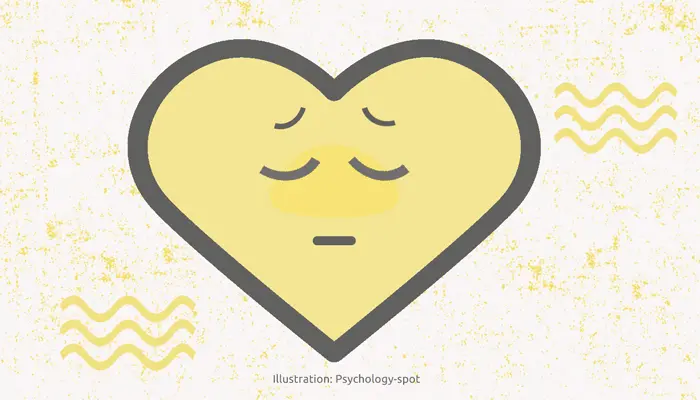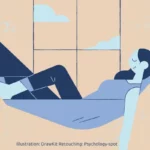
Our society extols consistency. Consistency, stability and firmness are praised values while inconsistency, instability and indecision become negative values to be avoided. However, human nature does not always follow social canons. Ambivalence lives in each of us. We can want and not want at the same time, love and hate, desire and reject.
When those conflicting emotions arise pushing us in different directions, we usually experience a conflict. Not only do we find it hard to figure out what we really want in order to act on it, but we also feel bad about our ambivalence. We blame ourselves for looking in opposite directions because we’re not supposed to.
What is affective ambivalence?
Ambivalence refers to a psychological conflict between opposing evaluations, impulses, and tendencies, often experienced as a debate between alternatives that generate equal parts attraction and rejection. Affective ambivalence, in particular, involves simultaneously experiencing positive and negative emotions and feelings toward something or someone.
That psychological state, which involves being torn between opposing impulses, is an inescapable part of our existence. In fact, we can experience affective ambivalence in so many areas, from food to abortion, euthanasia, alcohol consumption and, of course, towards other people or groups.
The love/hate trap
That wanting and not wanting generates a psychological tug-of-war that can end up taking its toll on us if it goes on too long over time. Affective ambivalence keeps us paralyzed in a precarious balance. We juggle those conflicting emotions, so that we don’t move in any direction, we don’t make any decisions. Obviously, that state can become emotionally draining in the long run.
In fact, affective ambivalence is often accompanied by high levels of anxiety. Loving and not loving, caring and hating at the same time, generates an emotional dissonance that makes us feel bad. That dissonance, however, does not come from ambivalence but from our inability to deal with these conflicting emotions.
When we believe that we should always have things clear and we hate indecision, ambivalence bothers us greatly because it contradicts the image we have of ourselves. It tells us that we are not as consistent and determined as we think. That psychological discomfort generates an inner tension that pushes us to make a decision, but since it is impossible for us, we end up feeling worse, trapped in that wanting and not wanting.
All of this is reflected in our behavior. A study carried out at the University of Amsterdam revealed that people who experienced ambivalence towards physical activity or a healthy diet had a harder time leading a healthy lifestyle, while those who were convinced of its benefits did not have as much difficulty changing their habits. And it is that ambivalence condemns us to a state of paralysis where change has no place.
Understanding the causes of affective ambivalence, the key to overcoming it
Affective ambivalence is not overcome by fighting it but by understanding it. Our Western society, unlike Eastern cultures, has nurtured a dichotomous thinking that makes us believe that love and hate are diametrically opposed feelings. In this case, it seems impossible to talk about hating someone you love without falling into a logical contradiction.
However, in reality love and hate are just ends of the same line. In fact, a study conducted at the South China Normal University found that the more we love a person, the greater the hatred we may experience if the relationship ends.
These researchers concluded that “the deeper the love, the deeper the hate.” After all, we only hate what really matters to us. Therefore, love can become a fertile ground where hate grows. When love turns sour, it can breed hate. In these circumstances, hate serves as a way to keep us attached to that person in a certain way when other paths are blocked. In practice, it helps preserve the powerful emotional connection that the love relationship generated.
If we turn the line of love/hate into a circle, we will realize that these extremes can touch, so it is not unreasonable to feel love and hate at the same time, especially when we focus on different aspects of the person or the situation.
For example, affective ambivalence in a partner can manifest itself when we think of certain characteristics that attract us to that person, such as their affection and level of commitment, and in turn remember other characteristics that we detest, such as being disorganized or forgetful.
We can also place all of our emotions on a continuum where we only consider how adaptive they are at the time we experience them. From that perspective, experiencing love and hate or attraction and rejection is only telling us that we are at a complex point in our lives where we have to stop and reflect on what is happening to us. Ambivalence, just like any other emotion, is just a signal that we need to accept and explore.
Affective ambivalence is not a problem if we do not make it a problem. It is only there to remind us that we are human, that we have doubts and mixed feelings. And that is not necessarily negative. On the contrary, it can be the engine that pushes us to get to know ourselves better and accept ourselves as we are.
Sources:
Conner, M. et. Al. (2021) Cognitive-Affective Inconsistency and Ambivalence: Impact on the Overall Attitude–Behavior Relationship. Pers Soc Psychol Bull; 47(4): 673–687.
Jin, W. et. Al. (2017) The Deeper the Love, the Deeper the Hate. Front Psychol; fpsyg.2017.01940.
Schneider, I. K. et. Al. (2015) The path of ambivalence: tracing the pull of opposing evaluations using mouse trajectories. Front Psychol; fpsyg.2015.00996.



